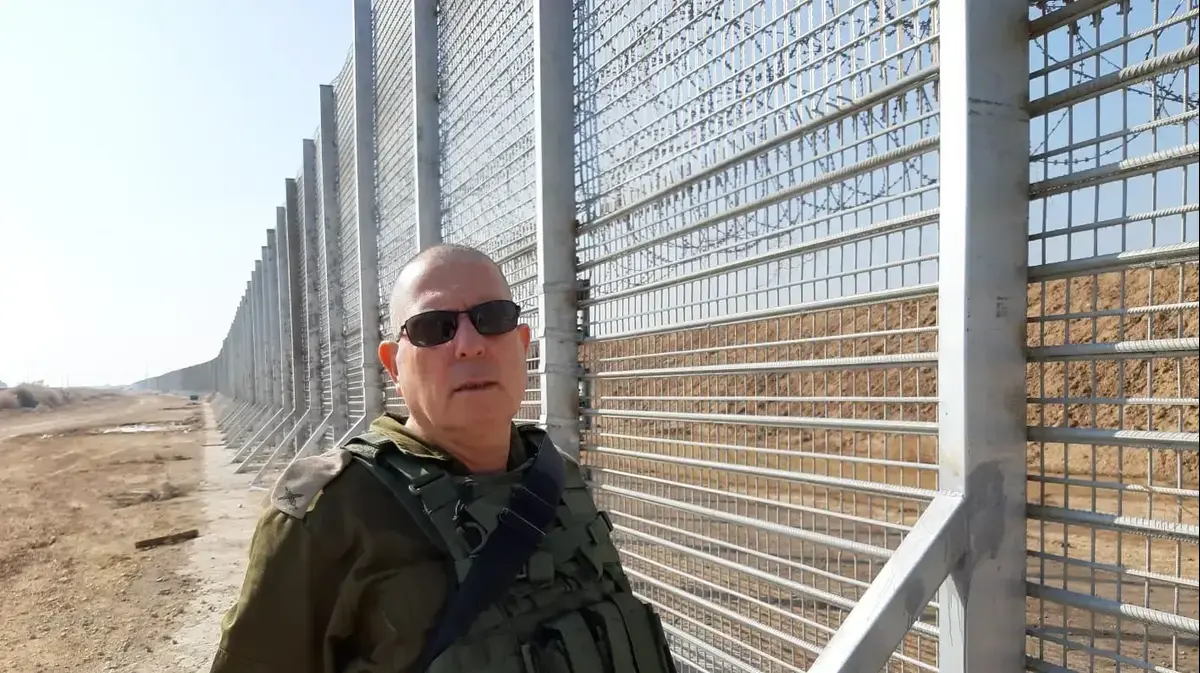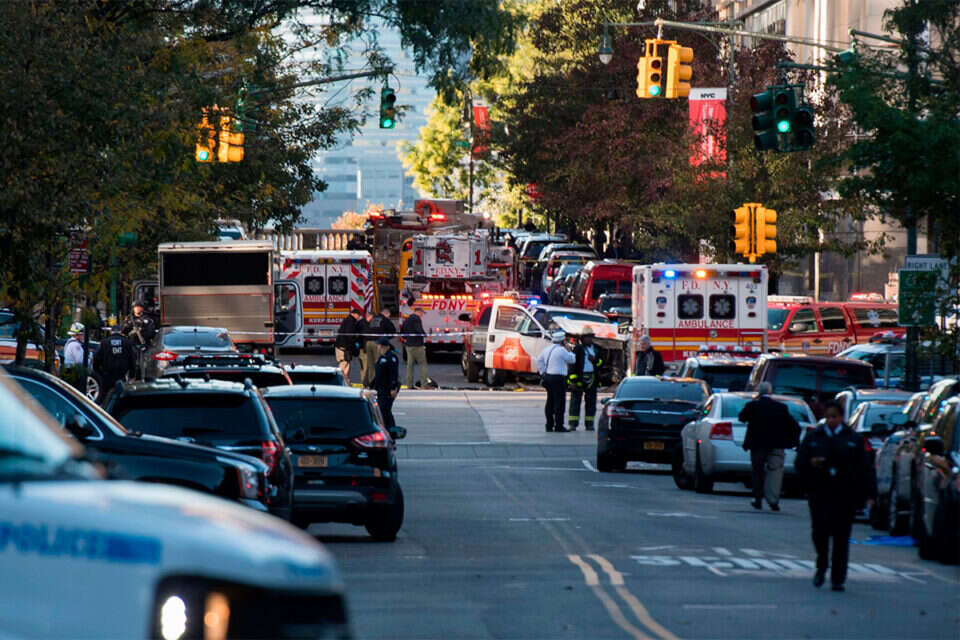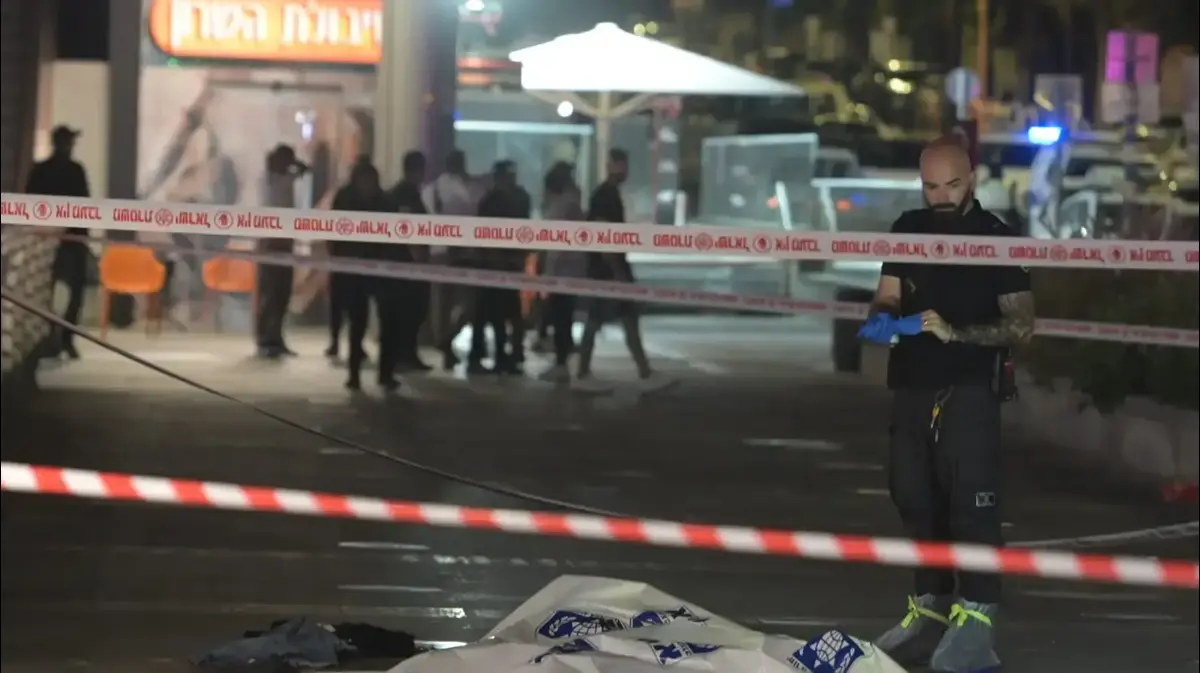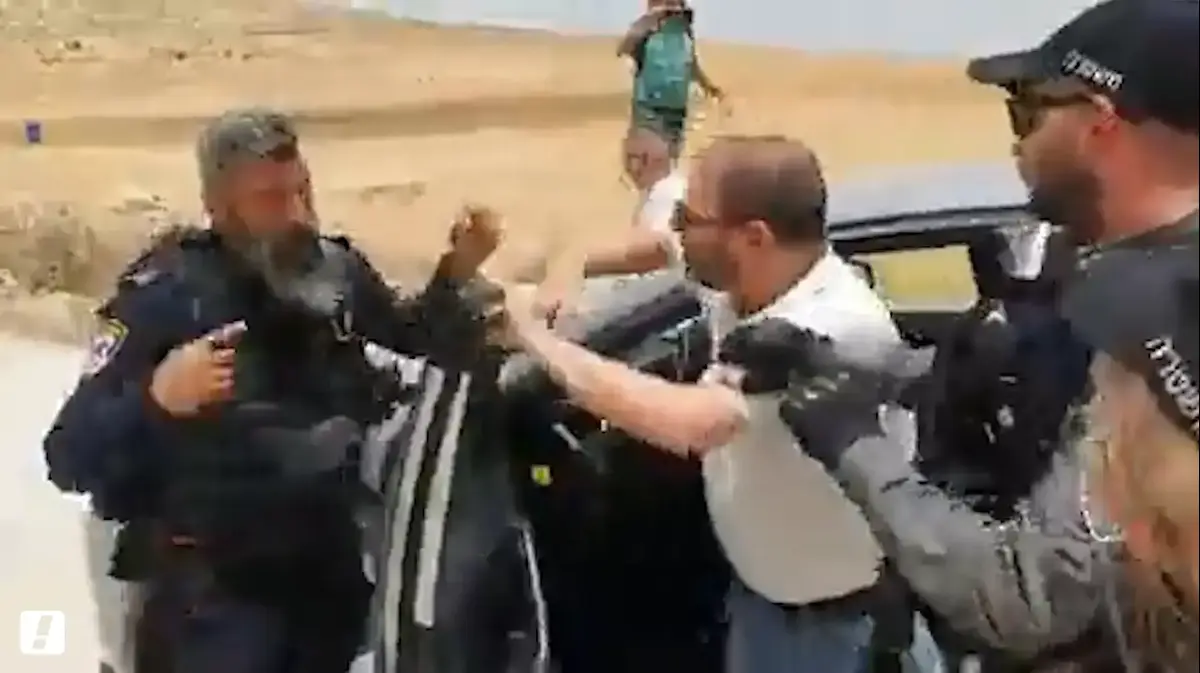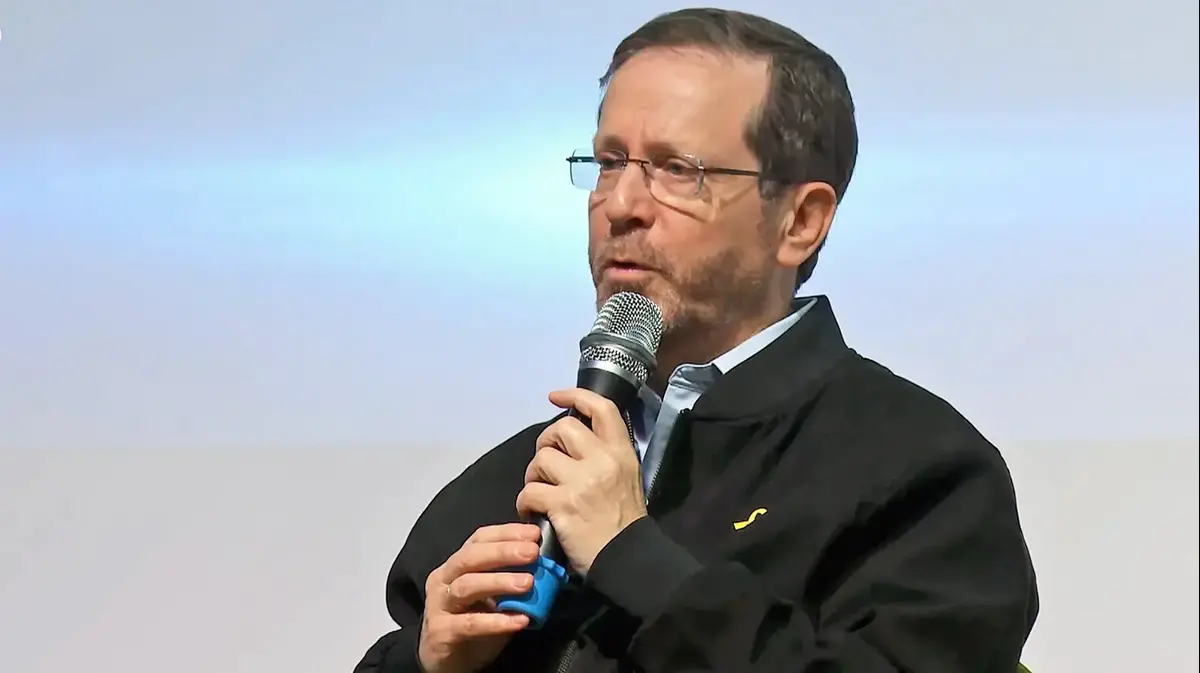In every area, in the face of every threat: the "performanceist" who created Israel
From the posts in Lebanon, through the separation fence that stopped the wave of suicide bombers to the barrier against the tunnels in the Gaza Strip. Brigadier General Eran Ophir's life stations pass between the IDF fronts, where he shines with creative engineering solutions to challenges that were considered impossible - until he reached the ground. Special interview
In every area, in the face of every threat: the "performanceist" who created Israel
Photo: Amir Buhbut, Editing: Amit SimchaThe shielded jeep stopped and attracted attention because of its proximity to the maritime barrier. A Hamas activist in a position on the seashore, hundreds of meters from the new fence, has been following the footsteps of the head of the seam line manager and borders at the Defense Ministry, Brigadier General Eran Ophir, surrounded by security guards. Suddenly, an unmanned IDF aircraft, which was buzzing and searching for suspicious activity, emerged into the area.
The maritime barrier is an engineering marvel built under the command of the senior officer with the aim of curbing terror on its subjects but mainly from the sea. In June 2018, not far away, in the Palestinian Territory, Israeli Air Force bombers fired a shaft from a naval tunnel through which they were expected to enter the Nukhba fighters, an elite unit in Hamas's military arm, and plunge from there to carry out an attack in the depths of Israel. Just as members of the same unit did during Operation "Cliff Eitan" and reached the coast of Zikim until they were eliminated by IDF fire from the air and the ground.
Read more on the subject
Security system experimented with a rocket propulsion system in the center of the country Yodah officer, commander reprimanded: Senior officials punished for sending agent to bring tahini from US in response to shooting on Sderot: IDF attacks Hamas target line in southern Gaza "Save my Baruch Yohai, I'm not Can see him over like that! " Promoted ContentBorn and raised in Kiryat Eliezer. Brigadier General Eran Ophir in the field (Photo: Amir Bohbut)
Brigadier General Eran Ophir in the field (Photo: Amir Bohbut)
The Naval Barrier is a brainchild of Brigadier General Ofir when he realized the operational need in the field that required a defensive response. The difficulty was to place a defense component that would last at sea depth. At first, Navy officers seemed to be overly complex but when Brigadier General Ofir and his men sharpened the data And presenting the plan it seemed to be an optimal response to the threat. This is an iron-free construction that touches the soil dipped in seawater and fiberglass fibers that protrude from the special concrete edges. The engineering form knows how to handle tides alongside a carefully selected rock break to detect cracks and reduce erosion.
It was then calculated in advance to position each rock they placed on the sea and then on each other. The final phase involved placing a terrific, thick fence painted in five layers of rust reports before reaching the sea area. The naval barrier will make it very difficult for a Palestinian diver to try to reach the shores of Israel and allow the IDF time in defense. There is something pastoral about walking on the barrier, but Hamas's position and our old fence about which violent Palestinians climbed about a year and a half ago to break into the State of Israel push every positive thought aside. Construction of the barrier began in June 2018 and ended at the end of six months. One of the complex projects on which Brigadier General Ophir is responsible. Who is responsible for building more than a thousand miles of wall and fence within the borders of the State of Israel some can handle Guinness Peak.
Brigadier General Ofir was born and raised in Kiryat Eliezer, Haifa. His father was a senior manager of the Haifa Municipality and his mother is an accountant in the textile industry. There was no hint in childhood what he was about to become in the Ministry of Defense. He began his military service in the IDF Logistics Corps. His first prominent role was the Logistics Officer of the 188th Armored Brigade during the Lebanese Security Strip. He climbed the ranks and positions at the General Staff.
More in Walla! NEWS More in Walla! NEWS3 shells fired from Gaza, one intercepted, 2 landed in open area; IDF attacks Hamas position
To the full articleA boundary map under construction and maintenance by the principal
Border map under construction and maintenance by the Administration (Photo: Untitled)
Prior to the withdrawal from Lebanon, there were those who designed and promoted creative defense solutions in IDF posts in southern Lebanon, focusing on its practice and aroma. Two posts that were the focus of attacks for Hezbollah's "fog squads." During 2000, one of the top officers led the establishment of the new Lebanese border and its fence. Initially, these were temporary posts that absorbed IDF forces leaving Lebanon and then the establishment of permanent posts where IDF soldiers serve until today. In fact, Brigadier General Ophir built the first kilometer of the first fence of his life.
In 2001, during the second intifada, Eran Ophir was appointed head of the IDF logistics division. The "performanceist" with his black beret attracted attention. At that time, Chief of Staff Shaul Mofaz recognized his uncompromising determination and imposed special tasks on him. Procurement and distribution of protective vests for soldiers fighting Palestinian terrorism in the Occupied Territories, distribution of anti-aircraft missiles to forces in the dry arm and means of observation. Issues that were not then in his area of responsibility. But even then, Shaul Mofaz knew that the method for operating Eran Ophir was 'routine and forgotten' and the mission would be carried out.
Establishing a protected crossing in Hebron - Covenant, Crusader, Zion, Tamar and Shephelah
Establishing a protected crossing in Hebron - Covenant, Crusader, Zion, Tamar and Shephelah (Photo: Untitled)
Later came the complex tasks that even senior Israeli government officials did not believe would succeedOphir is a stubborn, thorough and determined officer to meet the complex tasks. Veteran commanders testify that he always portrayed himself as a creative figure and when he had difficulty providing food to the fighting forces in Judea and Samaria and the Gaza Strip while fighting, he conceived the idea of packaged sandwiches including a personal drink bottle instead of the expensive and freshly packed dishes. The idea became a resounding success. So if the soldiers in the field have since made claims about culinary diversity within the sandwich is the address.
Later came the complex tasks that even senior Israeli government officials did not believe would succeed. Those who will be engraved on the pages of history forever on both sides of the State of Israel.
In 2001, Palestinian suicide bombers and terrorists from the Gaza Strip and Judea and Samaria hit Israeli citizens. At the time, Shin Bet chief Avi Dichter promoted the targeted counterterrorism policy, the idea was to set up a fence that would block the Terrorist Promenade from the territories to the home front of Israel. Dichter insisted on erecting an obstacle but there were many other senior officials who opposed the idea. Prime Minister Eric Sharon was convinced and the task was imposed on the Israeli police. But the task of building a 200-meter system fence in the eastern back of the Umm al-Fahm border in the Palestinian Territory was unsuccessful. Security officials and political officials raised many questions about the need for the construction of the fence at the seam line.
It was decided to assume responsibility for the IDF engineering project. Brigadier General Ophir in the field (Photo: Amir Bohbut)
Brigadier General Eran Ophir in the field (Photo: Amir Bohbut)
In February 2002, a murderous attack took place in Neve Ya'akov and then Jerusalem Mayor Ehud Olmert announced that he would not wait for the political echelon and the security establishment to erect a fence around the Jerusalem envelope from municipal funds to prevent terrorist infiltration. The municipal declaration embarrassed many in the government and accelerated the process of building the fence.
The year was already 2002. The extent of suicide bombers increased and buses and restaurants in the heart of Jerusalem and Tel Aviv exploded. The GSS already knew that there was a chain of command in the terrorist infrastructure that includes a suicide bombing plan, prepares an explosive device, detects and recruits suicide bombers, the terrorist, the terrorist launcher, the assistant and the moment his escort and the border smuggler who led the terrorist to the point where he was supposed to explode. Judea and Samaria areas as the easiest stage in contrast to the fence's effectiveness along the Gaza Strip, which alerted any penetration attempt.
In a consultation between the top security forces and the prime minister, it was decided to assume responsibility for the IDF engineering project. Everyone then knew about how it starts, but certainly not how it will end. The instructions were passed from then-military secretary general Gadi Izenkott to deputy chief of staff Gabi Ashkenazi. The IDF did not like the idea so much, but Sharon, who was asked about it in Israel and in the world, made it clear that this was not a political border but a security component for curbing terror.
Protecting shuttle stations in the Judea and Samaria area
Shielding shuttle stations in the West Bank (Photo: Untitled)
The IDF, assisted by Ophir, formulated a concept that included a fence, close to it a curly fence, a canal against a vehicle, an alert electric fence, a blur, a patrol, and a security space on both sides of the fence.The task was assigned to Brigadier General Ophir. The executioner was unquestionably capable of meeting the task. All he needed was budget and policy. By mid-2004, the seam line was built from the northern Samaria border with Jordan in the northeast to the Samaria road in the southwest. The first section was from the Salem area. After 38 years, the fence changed the rules of the war with terror. The IDF, assisted by Eran Ophir, formulated a concept that included a fence, a curb fence, an anti-vehicle canal, an alert electric fence, a blur, a tour hinge, and a security space on both sides of the fence. . The cooperation between the IDF, the Shin Bet, the Border Police and the Israeli police along the fence has led to success and helped to promote the need to erect this type of fence in other areas.
In June 2004, a three-judge High Court ruling led by then-Supreme Court President Aaron Barak said that 30 km of 40 km of separation fence in the Jerusalem area is illegal because they are built on improper and disproportionate balances and ordered the IDF to examine Redefine the route of the fence. A human hit to the project on his face. This High Court ruling and those following it created substantial restrictions on the construction of the fence but also approved some of it, including planning projects and created legal rules for its establishment with concern for the fabric of Palestinian life. The reservations became clear and the field work received a significant boost from Prime Minister Eric Sharon. Around the clock, the need was clear, and from 2000-2003 more than 1,000 Israeli civilians were killed as a result of terror attacks.
Along with Brigadier General Ofir's engineering activities in Judea and Samaria, over the years he has built 600 km of fence and a brown section, he is required to provide protection solutions throughout the Gaza Strip. He was defined as an expert and the general staff wanted him wherever creative thinking was needed and a complex resource-rich project to manage. In fact, it also reached the Philadelphi route, which separates Palestinian Rafah from Egyptian Rafah, which divided IDF sites that were the target of permanent attack. Underground through tunnels and above ground. Brigadier General Ophir pushed the wall into the ground: steel connections at the depth of the ground that created a wall A divide between the terrorist organizations' interest in digging inferno tunnels under the fighter security post.
Many lives have been saved. Brigadier General Ofir in the field (Photo: Amir Bohbut)
Brigadier General Eran Ophir in the field (Photo: Amir Bohbut)
In 2005, it was the disengagement from the Gaza Strip. Brigadier General Ophir plowed traffic lines from the settlements of Wad Sadeh, Bnei Atzmon and Rafah in the southern Gaza Strip to Eli Sinai, a fishing boat and Nissan in the northern Gaza Strip, to reshape the border the following day and lay the foundations without knowing again that the distant future includes projects for the construction of a new fence and underground wall tunnels.
In 2010, he embarked on an Egyptian border fence project to stop tens of thousands of infiltrators fleeing the Chinese desert to seek employment and asylum in Israel. He finished the job only when he arrived at KM 242. And at the same year, it was also decided to advance the evil from the Syrian border by constructing a new 110-km fence on the Golan Heights, limited sections of the Lebanese border to protect localities and with the decision to establish Ramon airport at a distance of 19 km from Eilat, he established 34 km on the Jordanian border.
In 2016, Izankot, Sharon's former military secretary to the 21st IDF Chief of Staff, was already tasked with Brigadier General Ophir's mission to build the underground wall against tunnels in Gaza. A complex engineering project on a global scale began in 2016. Experiments in the field of what the Hamas attack tunnels will look like and in 2017 with a very heavy security concern, the engineering work in the field began 65 km as a threat of sniping, mortar shells including a mad run from terrorists to workers on the border was constantly floating in the air. In 2018, another project was added under the command of Brigadier General Ophir. The intelligence pointed to a clear Hamas organization in the Gaza Strip to organize May 2018 demonstrations in which more than 100,000 Palestinian civilians will be frustrated, fearing running amok towards Israeli and postal settlements.
"In all the places where the threat step was clear and tangible." Brigadier General Ofir (Photo: Amir Buhbut)
Brigadier General Eran Ophir Against the Naval Barrier (Photo: Amir Buhbut)
Three weeks before the protests began on the eve of the transfer of the US embassy from Tel Aviv to Jerusalem, it seemed an impossible task to erect a fence in the Karni area, which is expected to be the most violent, similar to the high and strong fence erected by Brigadier General Ofir on the Egyptian border. Southern Command at the time and now Lieutenant General of the General Gen. Ilam Zamir and the commander of the Gaza Division for the time of the Washington military attache Gen. Yehuda Fox supported and assisted. Brigadier-General Eran Ophir, surrounded by his men, leaned over the maps and the engineering idea, including the sensors required to be deployed in the field, determined after brief consultations that he would meet the mission on schedule. Three weeks.
Defense Ministry led by Maj. Udi Adam and Chief of Staff Iznakut provided the resources and power needed to carry out the mission and day before the giant demonstrations ended. A significant obstacle was set against what the Palestinians called "return marches," a demonstration of 40,000 Palestinians at the largest focal point. "Many lives have been spared thanks to the barrier built by Brigadier General Eran Ophir," senior officers of the Southern Command said, "not only erecting a fence but connecting technologies in the space under a high, pre-determined engineering standard. Each time the violent protesters ran to the border, they found a strong fence. And high. " After that, the fence sections were expanded and in Karni, even his son grew twice to avoid unnecessary risks in the face of protests that lasted more than a year and a half until the Egyptian-mediated Hamas settlement process began.
Brigadier General Ophir is not alone in this story. He is surrounded by a team of 60 people, of whom 12 are engineers, most of whom are centers of knowledge in their field. "They are simply excellent. Amazing people who have been with me for years. We are a family, "he said, blushing when asked to explain the story behind history. A recent survey was conducted on the quality of service and innovation among IDF permanent posts. In the first place, the Air Force was selected, in the second place the Intelligence Collection Unit 8200 and in the third place the Director of the Ministry of Defense seam under command of Brigadier General Ophir.
None of his well-known men knew exactly the turning point in his life that led him to build a fence for 1,064 km. One of the officers who accompanied him on projects in Judea and Samaria explained that one should not sit and watch the fence he built until the formula was discovered but to examine his character simply And the understanding of the operational need, “In all the places where the threat step was clear and tangible. The operational need does not require deepening to understand why it is important to meet deadlines. "
"There is no such thing as difficult for him." A new model of lathes
New Model Lattices (Photo: Untitled)
According to the head of the Southern Brigade Commander Hadas Abutbul, "As soon as he gets the job, he doesn't hesitate and goes down to the small details. Ready to learn from everyone. Includes a soldier in the rank of Sergeant. He is very thorough. Gives confidence but very strict implementation of the programs. There is no such thing as difficult for him. Have a plan? You have to make the same point and our profession has quite a few challenges. Some are engineering but also from other worlds. There he swims. It's not over. It requires efficiency. Always. Always think short of times and costs. For example, compared to the underground railroad excavations, the costs of the underground wall project are significantly cheaper. Very significant. "
Despite her extensive experience in the field of engineering and the management of the citizenship project, she does not wink, "Why am I still here? Where will I have challenges and such an interest? I run a NIS 3 billion budget and have pride in what I do and a clear unit pride. I am a mother and combine a very intense military life. Satisfied with the prevention of terrorism. "
Malcolm Gladwell describes in his book a turning point about the great importance of the small things, the small moments, the few seconds in a film that must be seen time after time to characterize processes and crack a whole cultural code. In my opinion, in the case of Brigadier General Eran Ophir and his people, he will constantly look around at the complex engineering challenges that he has repeatedly faced from the time he was a young officer and he could have them through creativity and thinking out of the box and not necessarily just because he is determined and 'performing'.
The engineering challenges still lie ahead. Maritime barrier (Photo: Amir Bohbut)
Maritime barrier (Photo: Amir Bohbut)
For example, in Beit Jala, he and his men located an engineering patent in Europe to build a 12-foot-high wall along a narrow section to protect the tunnel road. When the High Court obliged it to adapt the fence to the Palestinian fabric of life, a burglary-protected grating system was developed, which transports water that integrates with the world's largest, to allow side-to-side flow without destroying the flood and in other cases building an animal crossing. We were not alarmed by the steep mountains and determined that it would be doable to put up a fence while not only for security but also for travelers while minimizing the damage to nature. At the height of the project, the bridge was built with a slope of over 30% of the world's largest. Because it was the most difficult engineering challenge because of the complexity of putting everything into practice Sea and the method of excavation and quarrying in rock. Not far away around Ramon Airport, he built a 26-foot-long, 4.5-mile missile fence that you can quietly tackle on Guinness Peak.
When the lone terror pounded throughout Judea and Samaria and Palestinians galloped with cars to the hitchhikes, he came up with an idea to protect them by a smart and effective method that is not yet known to the public. Outwardly, these appear to be only fixed columns to the ground. When lone terrorists ran with a knife to stab soldiers and civilians, he and his men built sheltered passages between the neighborhoods without human contact. All of this is unparalleled in the budget scope and the constant threat from the Gaza Strip, including the construction of the underground wall, which incorporates diverse and sensitive advanced technology. A project that includes more than a thousand workers wearing helmets and protective vests that are proceeding according to plans for the construction of the underground wall.
Seemingly it looks like a summary article. But not really. The engineering challenges are still ahead of the State of Israel. Not all boundaries are closed yet, and some projects are underway, some are now in progress and around the clock. If that is not enough then just last week, US President Donald Trump presented the century-long deal that includes a new partition of the territory in the Occupied Territories and an underground tunnel from Gaza to Ramallah. If anyone here has to roll up their sleeves and walk in the mud it's clear to them who it will be.

